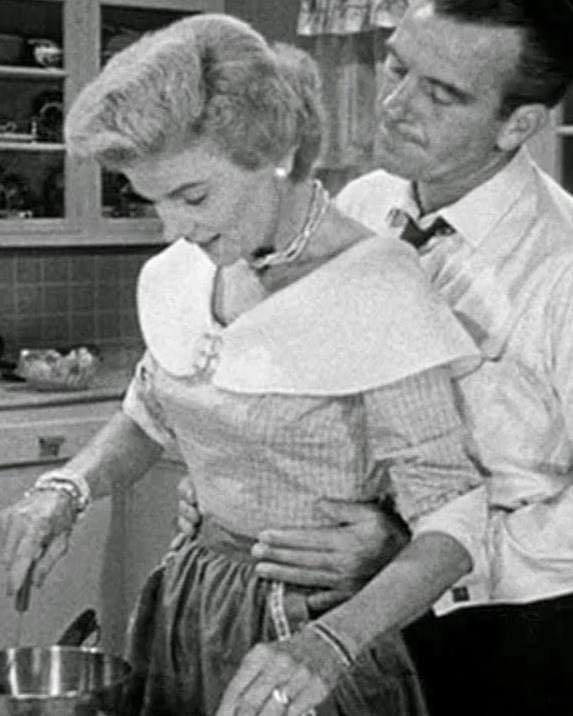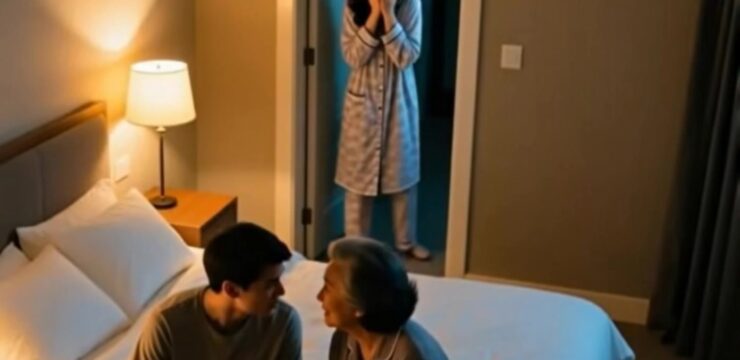
‘Leave It to Beaver’ holds a special place in television history, capturing the essence of American suburban life from 1957 to 1963. The Cleaver family’s wholesome adventures resonated with audiences, offering both entertainment and moral lessons. Yet, behind this polished portrayal lay a series of amusing mistakes and intriguing behind-the-scenes stories that fans continue to cherish.
The Charm of Imperfection
While ‘Leave It to Beaver’ aimed for perfection, it’s the occasional slip-ups that add a layer of endearing authenticity. These moments remind us that even in the meticulously crafted world of the Cleavers, human errors sneak in, making the show all the more relatable.
June Cleaver’s Calendar Conundrum
In the 1963 episode “The Poor Loser,” a keen eye might spot June Cleaver’s wall calendar displaying dates from 1961. This oversight offers a delightful glimpse into the production’s occasional continuity challenges, adding to the show’s nostalgic charm.
The ‘Mayfied’ Ticket Blunder
The same episode presents another subtle error: tickets intended for the town of Mayfield are printed as “Mayfied.” Such minor mistakes highlight the human aspect of production, endearing the series even more to its audience.
Special Effects: The Buzzing Bee
In “The Silent Treatment,” Beaver’s encounter with a bee while painting a door showcases the era’s special effects. The visibly fake bee, suspended on a string, transforms an ordinary scene into an unintentionally humorous moment, reflecting the show’s quaint production techniques.
Jerry Mathers: Life Beyond Beaver
Jerry Mathers, the face of Theodore “Beaver” Cleaver, often reflects on his time portraying the curious youngster. Contrary to his on-screen antics, Mathers recalls getting into far less trouble in real life, offering a charming contrast between actor and character.
A Unique Audition Experience
Mathers’ path to becoming Beaver is a story in itself. Arriving at his audition in a Cub Scout uniform, eager to attend a meeting afterward, his candidness and authenticity resonated with the producers, securing him the iconic role.
The Original Wally: A Casting Shift
Tony Dow’s portrayal of Wally Cleaver became iconic, yet he wasn’t the original choice. Initially, Paul Sullivan was cast as Wally, but a sudden growth spurt made him appear too mature, leading to Dow stepping into the role and winning over audiences.
Barbara Billingsley’s Signature Style
June Cleaver’s elegant pearls and high heels became her trademark. Beyond fashion, these choices had practical purposes: the pearls concealed a surgical scar, and the heels ensured Billingsley matched her on-screen sons’ heights, blending functionality with style.
Pushing Boundaries: The Bathroom Scene
‘Leave It to Beaver’ ventured into uncharted territory by depicting a bathroom scene, a rarity in its time. In an episode where the boys consider housing a pet alligator in the toilet tank, the show subtly challenged television norms, reflecting its commitment to portraying authentic family life.
The Costliest Episode
One standout episode features Beaver climbing into a giant cup of soup for a billboard advertisement. This ambitious scene required significant resources, making it one of the most expensive episodes produced, showcasing the show’s dedication to creative storytelling.
Conclusion
The enduring appeal of ‘Leave It to Beaver’ lies not just in its portrayal of idealized family life but also in its authentic imperfections. These behind-the-scenes stories and on-screen bloopers offer fans a deeper connection, reminding us that even in the most polished productions, it’s the human touches that leave a lasting impression.





